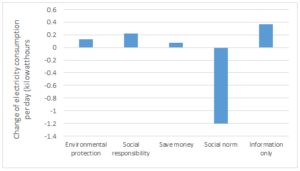Resource Use
All living things use resources from their environment to survive, to grow, to reproduce. However, if the resource consumption of a population is permanently higher than the renewal rate of the resource, in other words exceeds the limits of ecological sustainability, then the availability of the resource gradually decreases – more is consumed than can regrow. This leads to population decline or the population has to move to new areas or resort to other resources.
In the history of our species, there are many examples of how groups of people have overused a resource. Some of these groups of people were then affected by a decline or collapse in their population size. Other groups have shifted to new resources or moved to new regions.
In today’s global society, there is little opportunity to tap into resources of new regions. The energy and water consumption of global society has reached, or even surpassed, the current limits of ecological sustainability.
Goal 12 of the Global Sustainability Goals is to shape human resource use so that it does not exceed the limits of environmental sustainability.
What role can technological innovations, jointly created regulations, social norms, and changes in our behavior play in making our resource use more sustainable?
Energy use
All living things need energy to move, to grow, to metabolize and to reproduce, and they obtain this energy from their environment. Plants and algae have the ability to generate energy directly from solar radiation through photosynthesis (they are autotrophic). Animals have to gain their energy through nutrition from other creatures – they are heterotrophic.
However, because of the importance of technologies for our species, we humans also consume other sources of energy for the manufacture and use of these technologies. Ever since we humans use fire, we burn wood and other renewable fuels. The production of various tools and other technologies in turn uses energy from fire. Coal – a fossil fuel – started to be used to produce energy before the beginning of our era in the Middle Ages, and gradually replaced the burning of wood (mainly because wood was already in short supply in the Middle Ages). Particularly in the 16th-19th century, the mining of coal was advanced, which in turn drove the industrial revolution.
The extraction and consumption of energy from fossil fuels rose rapidly in the last century. This drove technological progress, e.g. the automotive industry and electricity, which in turn drove innovation in fossil fuel extraction. More and more people in the world have gained access to electricity in the last three decades. However, global population growth and technological progress led to an exponential increase in global energy consumption.
Our energy consumption from fossil fuels is a big problem. On the one hand, fossil fuels are limited and they are not regrowing (or their renewal rate is too slow – millions of years), while our civilization is currently dependent on energy from fossil fuels. On the other hand, the burning of fossil fuels increases the level of CO2 in the atmosphere, thereby contributing significantly to climate change, which can have disastrous consequences for our global society in a few decades.
Some people think that energy generation from fossil fuels is still the best and most efficient way for us humans to meet our energy needs. Accordingly, we should invest in new technologies that allow us to extract more fossil fuels more efficiently.
Others think that, given the facts that fossil fuels are limited and their use contributes to climate change, we should be sure to invest in technologies that meet our future energy needs from renewable energy sources (i.e., energy sources with a high renewal rate) as well as technologies that help us to use energy more efficiently.
Goal 7 of the Global Sustainable Development Goals is to secure access to affordable, reliable, sustainable and modern energy for all by 2030.
How will global humanity meet its energy needs in the future? What options can we use to reduce our energy consumption or make it less harmful to the climate?
What role can technological innovations, jointly created regulations, social norms, and changes in our behavior play in making the energy consumption of our species more sustainable?
Behavioral scientists explore ways in which people’s behavior can be changed when it comes to their consumption of resources: to what extent do financial incentives, social norms, reminders, or moral appeals affect their behavior?

What motivates people to save energy
A set of behavioral experiments to find out what motivates people to save electricity, exploring the roles of monetary incentives, social norms, appeals to the environment or to citizenship.
Water use
All living things need water to survive. Due to the rapid growth of our population, and due to the high water consumption in agriculture and industry, however, the water consumption of our species increased more and more. Although more and more people in the world have gained access to safe drinking water over the last two decades, increasing consumption today leads to scarcity of drinking water.
How will water consumption change in the future? How can we ensure in the future that there is enough drinking water for everyone?
What role can technological innovation, jointly created regulations, social norms and changes in our behavior play in making our species’ water consumption more sustainable?
more data and information about resource use:

